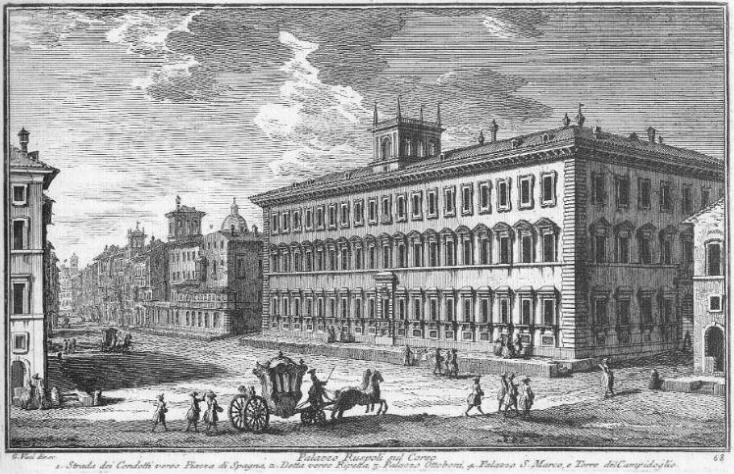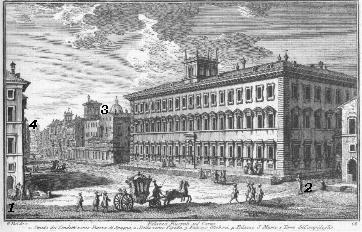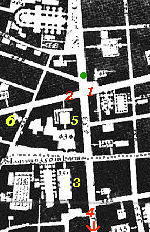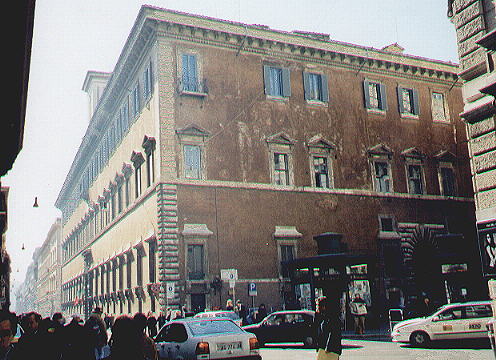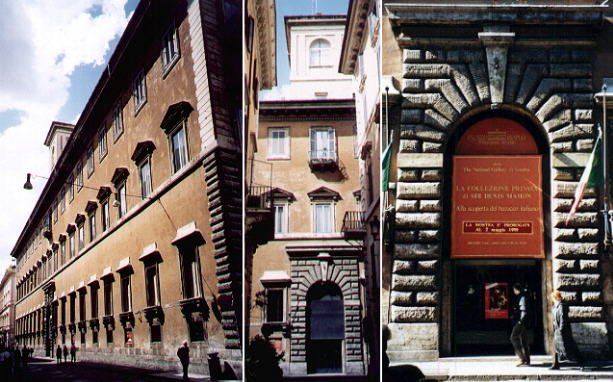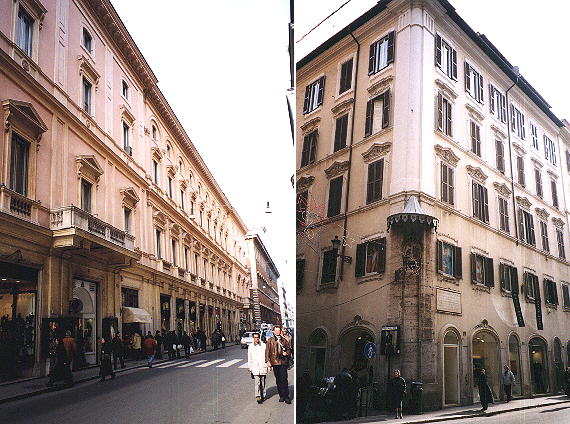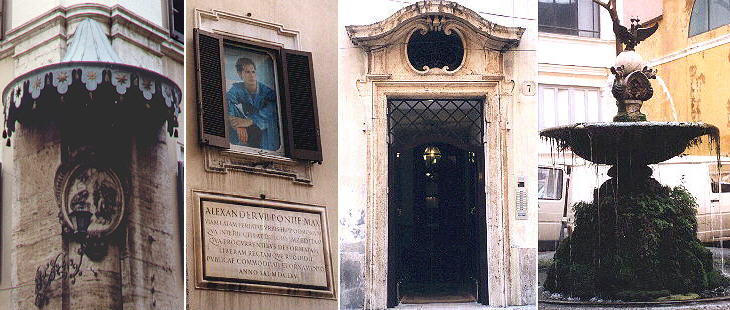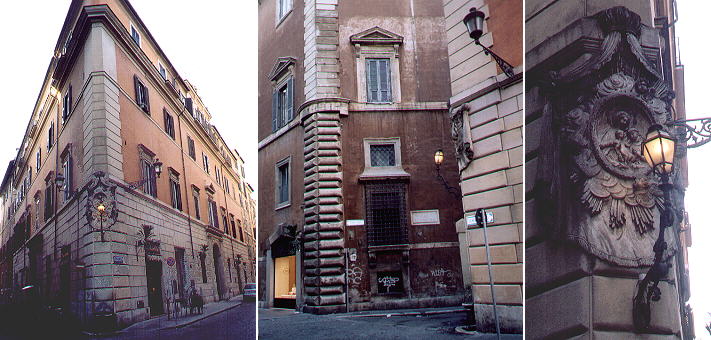  Palazzo Ruspoli (Book 4) (Map B2) (Day 1) (View C6) (Rione Campo Marzio) and (Rione Colonna) In this page:
In this view Vasi shows almost the west side of Via del Corso from
north towards south (Palazzo Venezia). The view is taken from the green dot in the small 1748 map here below.
In the description below the plate Vasi made reference to: 1) Strada dei Condotti towards Piazza di Spagna;
2) Strada dei Condotti towards Ripetta;
3) Palazzo Ottoboni;
4) Palazzetto S. Marco (Venezia) e Torre del Campidoglio. 4) is shown in another page.
The small map shows also 5) Palazzo Ruspoli; 6) Palazzo Della Genga. The dotted line in the small map delineates
the borders between Rione Campo Marzio (top) and Rione Colonna (lower part).
Palazzo Ruspoli was somewhat isolated, whilst today there is a line of palaces of more or less the same height all along Via del Corso.
The elegant and sober palace was built by Bartolomeo Ammannati for the Rucellai Florentine family in the second half of the XVIth century. The entrance shows the typical bugnato (ashlar stones) of so many palaces in Florence (including the Rucellai's one). Eventually the palace passed to the Caetani and to the Ruspoli family. Palazzo di Fiano (or Ottoboni)
Cardinal Pietro Ottoboni became Pope Alexander VIII in 1689 at the age of 79. He died after 15 months and the double-headed eagle of his coat of arms did not have time enough to become popular like the dove of Innocentius X. Palazzo Ottoboni (or Fiano after the nephew of the pope, the Duke of Fiano) consisted of two buildings in Via del Corso facing each other. The main building on the same side of Palazzo Ruspoli was largely reshaped in the XIXth century: only in the courtyard a fountain tells us something about the past owners (the double-headed eagle is associated with the dragons of the Boncompagni family). The smaller building on the other side has retained its XVIIIth century looks. The inscription on the corner celebrates Alexander VII for pulling down the Arco del Portogallo, a Roman arch on top of which Cardinal Giorgio di Portogallo in the XVth century built a passage to create a link between the two palaces and which was a sort of inner gate of Rome. Actually the names of some streets (Via della Vite-grape , Via Frattina-bush) departing from Via del Corso confirm that the area between Porta del Popolo and Arco del Portogallo was almost out of town in the XVth century.
This simple XVIth century palace was modified in 1612 when Pope Paulus V Borghese wanted to grant to his nearby family palace a direct access to Via del Corso: this explains the sharp angle between the already existing Via del Leoncino and the newly
opened Via della Fontanella di Borghese, named after a small fountain at the corner between the two streets. The Della Genga, who acquired the building from the Borghese, became famous in 1823 when Cardinal Annibale Della Genga was elected pope (Leo XII).
Next plate in Book 4: Palazzo Borghese
Go
to |
All images © 1999 - 2003 by Roberto Piperno. Write to romapip@quipo.it
